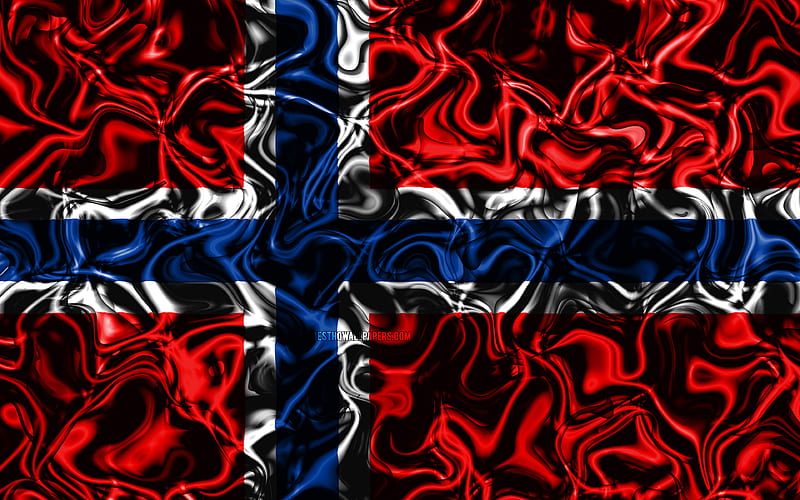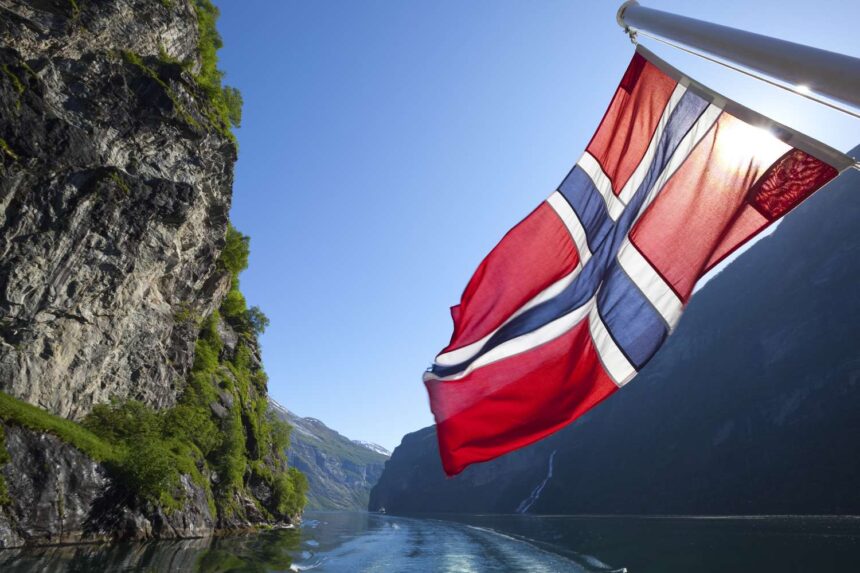The Norway Flag, with its striking red, white, and blue colors arranged in a cross design, is a powerful symbol that embodies the history, culture, and national identity of Norway. As one of the oldest flags in the world still in use, the Norway Flag carries deep historical significance and reflects the values and traditions of the Norwegian people. This article explores the symbolism, evolution, historical context, and cultural impact of the Norway Flag, highlighting its enduring importance in contemporary Norway and beyond.
Symbolism and Design
The Norway Flag, known as “Norges flagg” or “Nordmanns flagg” in Norwegian, features a simple yet bold design:
- Colors: The flag consists of a red field with a blue cross outlined in white that extends to the edges of the flag. The cross is offset toward the hoist side (the left side when viewed from the front).
- Cross Design: The design of the flag is based on the Nordic cross, which is a cross symbolizing Christianity and widely used in Nordic flags. The Norway Flag’s cross is distinctive in its shape and placement, reflecting Norway’s historical ties to Christianity and its Scandinavian heritage.
The colors of the flag—red, white, and blue—are common in many national flags around the world, but their arrangement in the Norway Flag is unique and instantly recognizable. Red traditionally symbolizes bravery, strength, and independence, while blue represents loyalty, truth, and justice. The white cross on a red background also evokes the Christian faith and heritage of Norway.
Historical Origins and Evolution
The history of the Norway Flag dates back over a millennium and is closely intertwined with Norway’s development as a nation:
- Medieval Era: The earliest known use of a flag resembling the current Norway Flag dates back to the medieval era, around the 13th century. It featured a red background with a yellow/golden cross.
- Union with Denmark: During the Kalmar Union (1397-1523), Norway was united with Denmark and adopted a common flag known as the “Dannebrog Banner.” This flag included the Danish cross design.
- Union with Sweden: Following the dissolution of the Kalmar Union, Norway entered into a union with Sweden (1814-1905). During this period, Norway retained its distinct national identity and began using the red, white, and blue flag design more consistently.
- Modern Flag Adoption: The current design of the Norway Flag was officially adopted on July 13, 1821, although variations of the red, white, and blue flag had been in use since the early 19th century. The design was standardized to its present form to reflect Norway’s independence and national identity.
Cultural Significance and National Identity
The Norway Flag holds immense cultural significance and is prominently displayed on various occasions and locations throughout Norway:
- National Holidays: The flag is raised on official flagpoles and private homes during national holidays such as Constitution Day (May 17th) and Independence Day (June 7th).
- Celebrations and Events: It is a common sight at public events, festivals, and gatherings, symbolizing unity, pride, and celebration of Norwegian heritage.
- Government Buildings and Institutions: The flag is flown at government buildings, schools, and military installations as a symbol of authority and sovereignty.
In addition to its domestic significance, the Norway Flag is a respected symbol internationally, representing Norway’s commitment to democracy, human rights, and peace. It is often displayed alongside other national flags at international events, diplomatic missions, and during visits by foreign dignitaries.
Flag Etiquette and Usage

Norwegians take great pride in the proper display and handling of their national flag, adhering to established customs and etiquette:
- Hoisting and Lowering: The flag is raised briskly at sunrise and lowered ceremoniously at sunset, except on certain occasions such as Constitution Day when it remains raised throughout the day.
- Respectful Display: The flag should be treated with respect and dignity at all times. It should not touch the ground, be flown torn or damaged, or be used for commercial purposes.
- Half-Mast Position: To mourn the death of a notable figure or observe national mourning, the flag is flown at half-mast.
Contemporary Relevance and Future
In contemporary Norway, the flag continues to serve as a unifying symbol that transcends political and cultural differences. It is a reminder of Norway’s rich history, enduring values, and commitment to democracy and equality. As Norway embraces diversity and globalization, the flag remains a steadfast emblem of national identity and pride, cherished by Norwegians at home and abroad.
Looking to the future, the Norway Flag will undoubtedly continue to play a vital role in shaping the collective identity and cultural landscape of Norway. Its enduring symbolism and timeless design ensure that it will remain a symbol of unity, resilience, and national spirit for generations to come.
In conclusion, the Norway Flag is more than just a piece of cloth; it is a living testament to Norway’s past, present, and future. Through its symbolism, history, and cultural significance, the flag embodies the spirit of a nation that values freedom, diversity, and solidarity—a beacon of hope and pride for all who call Norway home.






